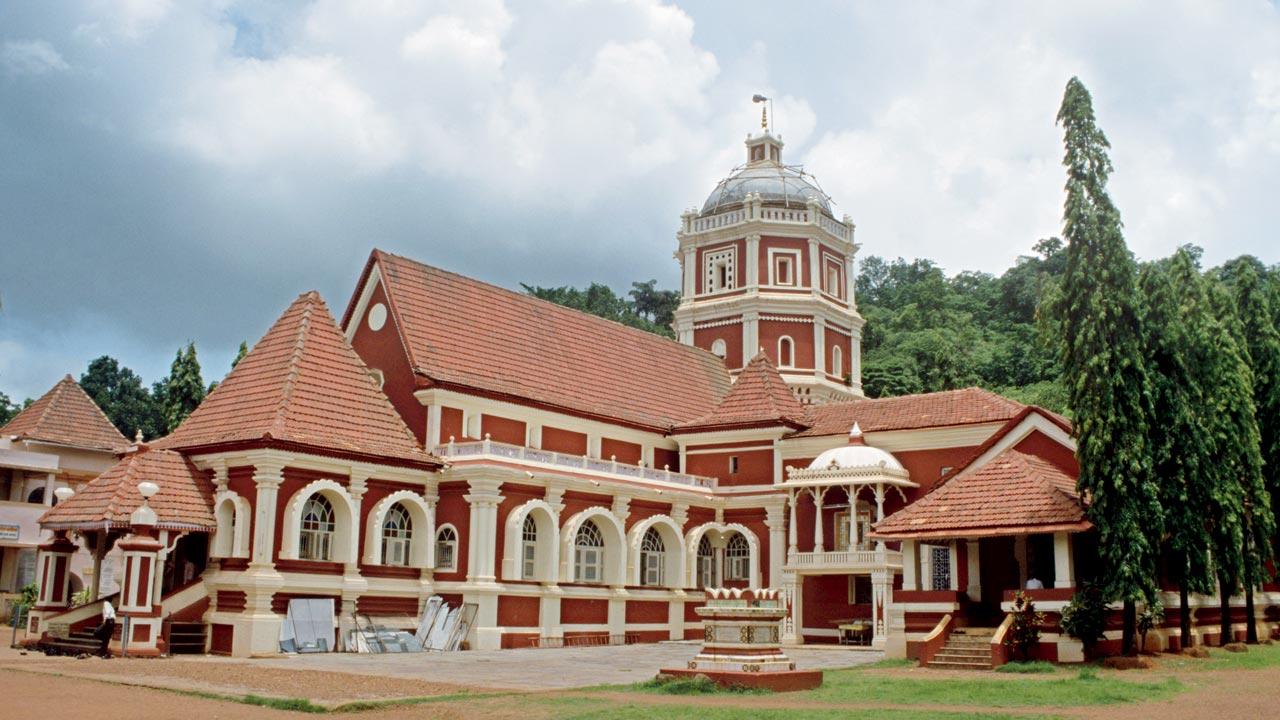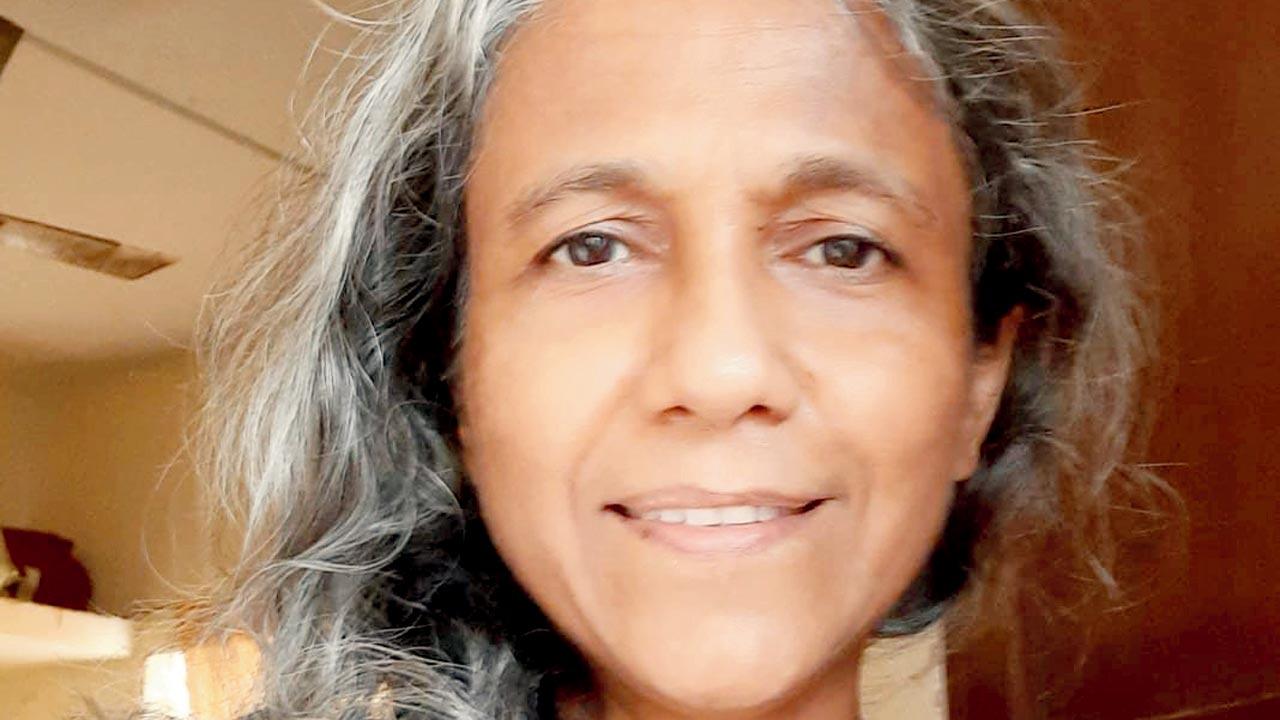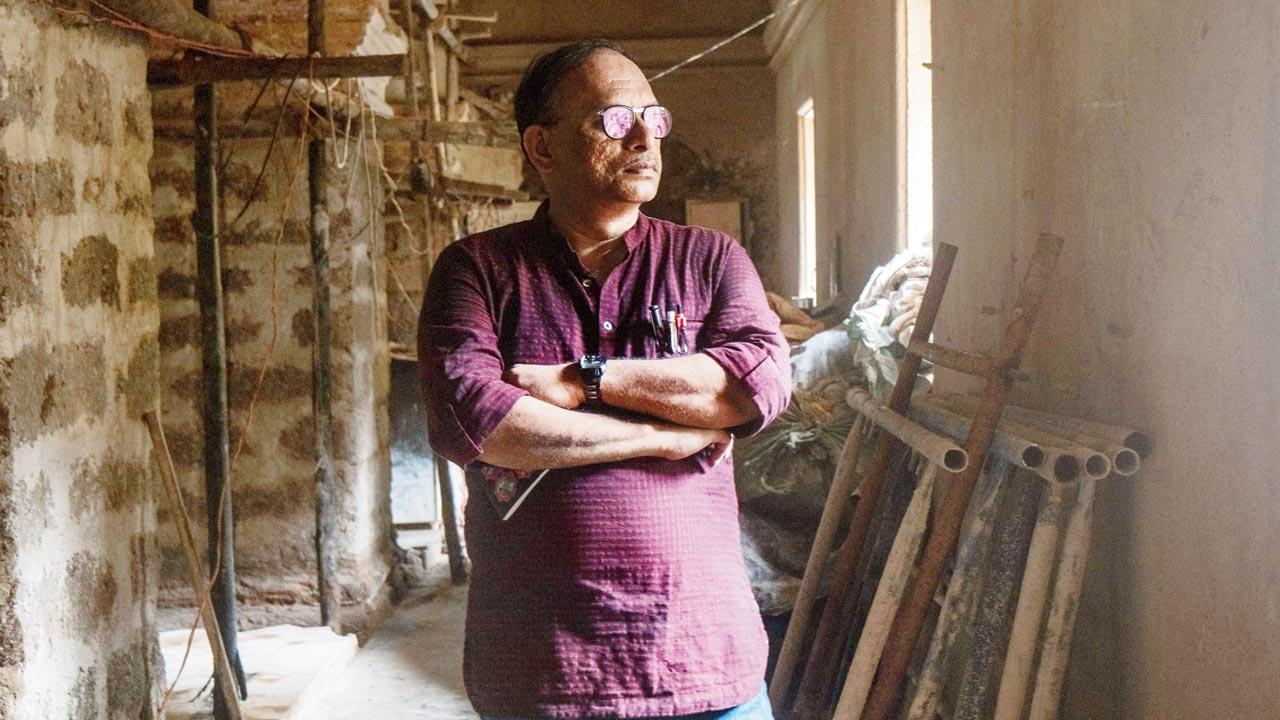Even as Goa’s chief minister launches roadmap to rebuild temples destroyed by the Portuguese, heritage activists say what the state really needs is preservation of existing historical temples rather than building new flamboyant concrete structures out of sync with where they stand

Before: Pic/Getty Images
There is a Parashuram legend ascribed to the geological history of Goa that historian and heritage activist Prajal Sakhardande recounts. According to it, Parashuram, the sixth incarnation of Vishnu, stood upon the Sahyadris. He wanted to settle here with 96 Saraswat families, so he commanded the sea to retreat by shooting an arrow from Arambol. That’s how the land of Gomantak was born. But long before the Saraswats settled here, Sakhardande says that the region was inhabited by the tribal communities, such as the Kunbi, Gowdas, and Velips. The earliest inhabitants. This history dates back thousands of years.
ADVERTISEMENT
Goa heritage promoter Sanjeev V Sardesai, who runs the forum Hands-on-Historians (Goa), however, reminds us that the state of Goa, as we identify its borders today, was only formed in 1788. It goes back to 1510, “when the Portuguese took over the Tiswadi island [part of Old Goa], which has river Mandovi on one side, and Zuari on the other. By 1543, they got hold of the Bardez region, and in the same year, Salsette. So, when we claim that the Portuguese ruled Goa for 450 years, we must understand that they didn’t occupy the present-day Goan border for those many years.”
 After: The restoration of the Shri Saptakoteshwar temple in Narve is an example of what Goa needs right now, says Heta Pandit
After: The restoration of the Shri Saptakoteshwar temple in Narve is an example of what Goa needs right now, says Heta Pandit
Tiswadi, Bardez and Salsette are part of the Velhas Conquistas (Old Conquests). The Goa Inquisition established in 1560, the aim of which, he says, was initially to keep a check on the “heretics”—new converts secretly practising their former religions—took a tragic detour. “They tried to erase the culture of this region, so that they could spread Christianity. For the first 278 years, no other language or religion was allowed to be practiced. Slowly conversions started taking place through force and deceit.” During this time, 270-plus temples were destroyed in the Old Conquests. Goa expanded with the Nova Conquistas (New Conquests comprising seven other regions) becoming part of Portuguese India by 1788. By the turn of the 1800s, locals used their prominence to seek permissions to rebuild some of these shrines.
Centuries on, the demand for the reconstruction of the temples destroyed in the Old Conquests is once again gathering steam.
 Before and After: The Goa Heritage Action Group is currently fighting against the renovation being carried out at 11th century Kadamba-era Shiv temple in Goa’s first ancient capital Chandor, originally known as Chandrapur, where old stones have been replaced with new stones
Before and After: The Goa Heritage Action Group is currently fighting against the renovation being carried out at 11th century Kadamba-era Shiv temple in Goa’s first ancient capital Chandor, originally known as Chandrapur, where old stones have been replaced with new stones
Chief Minister Pramod Sawant in his budget speech this year, announced the allocation of Rs 20 crore for restoration of “cultural centres,” which were destroyed by the colonists. On Thursday, the CM said that the directorate of archives and archaeology in Goa has begun a survey to identify ruins of temples that were demolished by the Portuguese. “The government will take a year to prepare a roadmap to rebuild these temples,” the CM said.
The move has been welcomed by the Hindu Janajagruti Samiti, a right wing organisation that aims to establish a Hindu Rashtra in the country. Speaking to mid-day, Ramesh Shinde, its national spokesperson, said that during a convention called Akhil Bharatiya Hindu Rashtra Adhiveshan that just concluded in Goa, a resolution was passed. Here, it was decided to initiate a campaign to rebuild temples in the region. A team will study the historical evidence. “We will try to gather as many documents as possible, and only initiate a legal fight, once evidence is available regarding the demolished temples in Goa,” he shares, adding that a similar campaign will be launched across the country.
 Prajal Sakhardande, Ramesh Shinde, Heta Pandit and Sanjeev V Sardesai
Prajal Sakhardande, Ramesh Shinde, Heta Pandit and Sanjeev V Sardesai
Heritage experts, historians and architects, however, believe that what Goa’s temples currently need is not “reconstruction,” but “conservation”. Heta Pandit, writer, independent researcher and vice chairperson of the Goa Heritage Action Group (GHAG), calls this a decision “obviously designed for populist propaganda”.
“Research is always welcome, but not if the conclusions are given to the researchers beforehand and proof searched to fit that conclusion. Temples have suffered damage and destruction through deliberate intent, neglect and the vagaries of time. It’s convenient to pin the blame on the colonial regime because that is still in recent memory. Who is addressing the destruction after Goa was liberated from Portuguese rule? After 1961?”
 The Shree Shantadurga temple, situated 33 km from Panjim, is an example of a typical Goan temple, which embodies heterogeneous architectural influences. Heritage experts say the need of the hour is to preserve structures like these, rather than rebuild flashy temples in the fervour to reclaim legacy. Pic/Getty Images
The Shree Shantadurga temple, situated 33 km from Panjim, is an example of a typical Goan temple, which embodies heterogeneous architectural influences. Heritage experts say the need of the hour is to preserve structures like these, rather than rebuild flashy temples in the fervour to reclaim legacy. Pic/Getty Images
Amita Kanekar is a novelist and independent researcher, who in a recently published paper titled, Architecture, Nationalism, and the Fleeting Heyday of the Goan Temple, elaborates on the aesthetic of the temples and their Goan-ness.
While little remains of the shrines that existed before the 16th century in the Old Conquests, she states that we get a “picture of the architecture of these shrines from Padre Francisco Sousa in his O Oriente Conquistado a Jesus Christo... indicating that most [of these religious shrines] were of simple design and fragile materials; as a rule, they were of mud with a roof of dried palm leaves, and had at the centre a pillar, also of mud, to support the deity. Small shrines of this description can, interestingly, still be found in some Goan villages even today despite the prevalence of industrial materials like cement and tiles.”
 Amita Kanekar
Amita Kanekar
Most of the pre-1510 remains of the religious shrines can be today found in the Novas Conquistas (New Conquests), “where there was no deliberate destruction of non-Christian shrines”. One of the temples that stood out here, was the Mahadev at Tambdi Surla, built during the rule of the Kadambas, feudatories of the imperial Chalukyas of Kalyana (in today’s Karnataka). But, they patronised a distinctive Karnata Dravida language of temple architecture, says Kanekar, who has worked extensively on the temple architecture of Goa.
The Goan temple architecture that arose under Portuguese India, she says, had a pronounced heterogeneity. It was influenced by the architecture of the European Renaissance and Baroque, the Deccan Sultanates and even the British Indo-Saracenic. “These temples are usually entered through a front porch or a semi-open pillared hall, leading to a lobby in the case of some big temples, where music might be played and musical instruments stored. This porch/lobby leads into the mantap or hall, which fronts the garba-cud or sanctum. The mantap, if large, is a pillared hall, but the pillars are not arranged in a grid pattern... like many Brahmanical temples outside Goa. Instead, there are two rows of pillars, creating a church-like spatial division into nave and aisles, the former being a step up from the latter and called the chouco. Rituals are conducted on the chouco, making it a relatively sacred space. Like the lobby, the mantap seems to have been semi-open earlier, and even today in some small temples, with just a sopo, or platform-like seat, edging the aisles, where people can sit after completing their worship... The garba-cud is usually rectangular, windowless, and domed. Within is the chief idol of the temple, usually placed at the centre of the room, but against the rear wall in some temples; it is flanked by secondary ones and other sacred objects, along with objects of rituals,” she explains. The bigger Goan temples boasted a dome—the highest point of the temple—and even a temple tank.
 Architect Rahul Chemburkar is currently working on a conservation project of the Vithoba Temple in Ponda. Pic Courtesy/VAASTU VIDHAAN
Architect Rahul Chemburkar is currently working on a conservation project of the Vithoba Temple in Ponda. Pic Courtesy/VAASTU VIDHAAN
While previous researchers have claimed that the “Goan temple” architecture originated in the 17th century with the construction of Shri Saptakoteshwar temple of Narve, Kanekar states that there are no records available to prove what the original structure in Narve looked like, and when exactly it was rebuilt. Her paper, however, argues that the period from the mid-19th century to the first decades of the 20th was the heyday of Goan temple architecture—it’s demise, she says, was accelerated after the Indian annexation of Goa in 1961. Pandit shares a similar sentiment. “There was a time [25 years ago] when a village temple in Goa looked like any other house in the village. God was a member of the village community and his house was called devghor or simply, God’s house. The change we see today, brought about by a changing economic status and a change in mindset is, in a word, awful. Traditional building materials have been replaced with concrete and temples are now larger in scale and size and follow no architectural style or grammar. These temples could be anywhere. There is nothing Goan about them.”
The GHAG has, through advocacy and dialogue, attempted to resist the rebuilding of historic temple sites with little regard for its heritage value. “It is an ongoing process of documentation, advocacy and execution. We have faced adverse and aggressive responses to our suggestions in the past. For example, some temples were rapidly destroyed the day after we approached the trustees and tried to convince them of the value of the architecture and art. We lost quite a few precious gems that way. One prime example was the Shri Brahmanimaya temple in remote Valpoi,” says Pandit, adding, “Most times people don’t know the difference between conservation, restoration, repairs and preservation.”
 Vithoba Temple in Ponda. “Some trustee members wanted to rebuild it using RCC framework, but I was adamant. We’ve now retained the original woodwork there,” he says
Vithoba Temple in Ponda. “Some trustee members wanted to rebuild it using RCC framework, but I was adamant. We’ve now retained the original woodwork there,” he says
Sakhardande, who is co-founder of GHAG, says that the 21-year-old heritage group is currently fighting against the renovation being carried out at 11th century Kadamba-era Shiv temple in Goa’s first ancient capital Chandor, originally known as Chandrapur, where old stones have been replaced with new stones. “We have written to the Central ASI [Archaeological Survey of India] against what happened to the Temple of Shiv. Goa has a rich pre-Portuguese antiquity and cultural heritage that is being ignored and only lip service provided towards its protection, preservation and conservation, and notification as heritage sites and monuments. For some reason, only the Portuguese rule is being tom-tommed in Goa.”
He says that while it’s a historical fact that the Portuguese converted Hindus and Muslims to Roman Catholicism and destroyed temples in the 16th and 17th century, and built churches in their place, “we cannot roll back the clock and destroy the churches. We want to live in harmony in Goa”. “In the interest of Goa, the best thing to do would be to preserve our historical temples and not renovate them to look brand new,” he says.
Pandit cites the restoration of the Shri Saptakoteshwar temple in Narve, helmed by Mumbai-based conservation architect Rahul Chemburkar and Nilesh Thakkar, and initiated by the Directorate of Archives and Archaeology of Goa. Work on the project began three years ago, and is still underway. “There have done a commendable job in of restoration and the rehabilitation of Goa’s unique art of kaavi at the Shri Saptakoteshwar temple. We congratulate the concerned Minister, the temple committee, the architects, the contractors and the local village community. It is a rare restoration project that has remained true to the structure and the environs.”
Chemburkar says, his aim was to recreate the original structure, as far as possible. Unfortunately, the temple trust had no photographic evidence, drawings or documentary material from before the 20th century. He says his long-time interest in Goan temple architecture came in handy. “Conservation needs a holistic approach. You need to look back in history to understand what the temple could have been. In the case of Shri Saptakoteshwar what we tried to do was rejuvenate the structure, and give it the identity of a temple, without compromising on the original architectural character. That’s how you retain legacy.”
Chemburkar's firm Vaastu Vidhaan is currently working on a temple conservation project of the Vithoba Temple in Ponda. “Some of the temple trustee members initially wanted to rebuild it using RCC framework, but I was adamant. We’ve now retained the original woodwork there, and also designed a new dome for the structure,” he says. “In the current socio-political environment, which is all about reviving the Hindu culture, we need to tread sensitively, because at the end of the day, people’s religious sentiments are involved. We need to take everyone into confidence, and go the extra mile, for others to believe in our vision.”
 Subscribe today by clicking the link and stay updated with the latest news!" Click here!
Subscribe today by clicking the link and stay updated with the latest news!" Click here!







